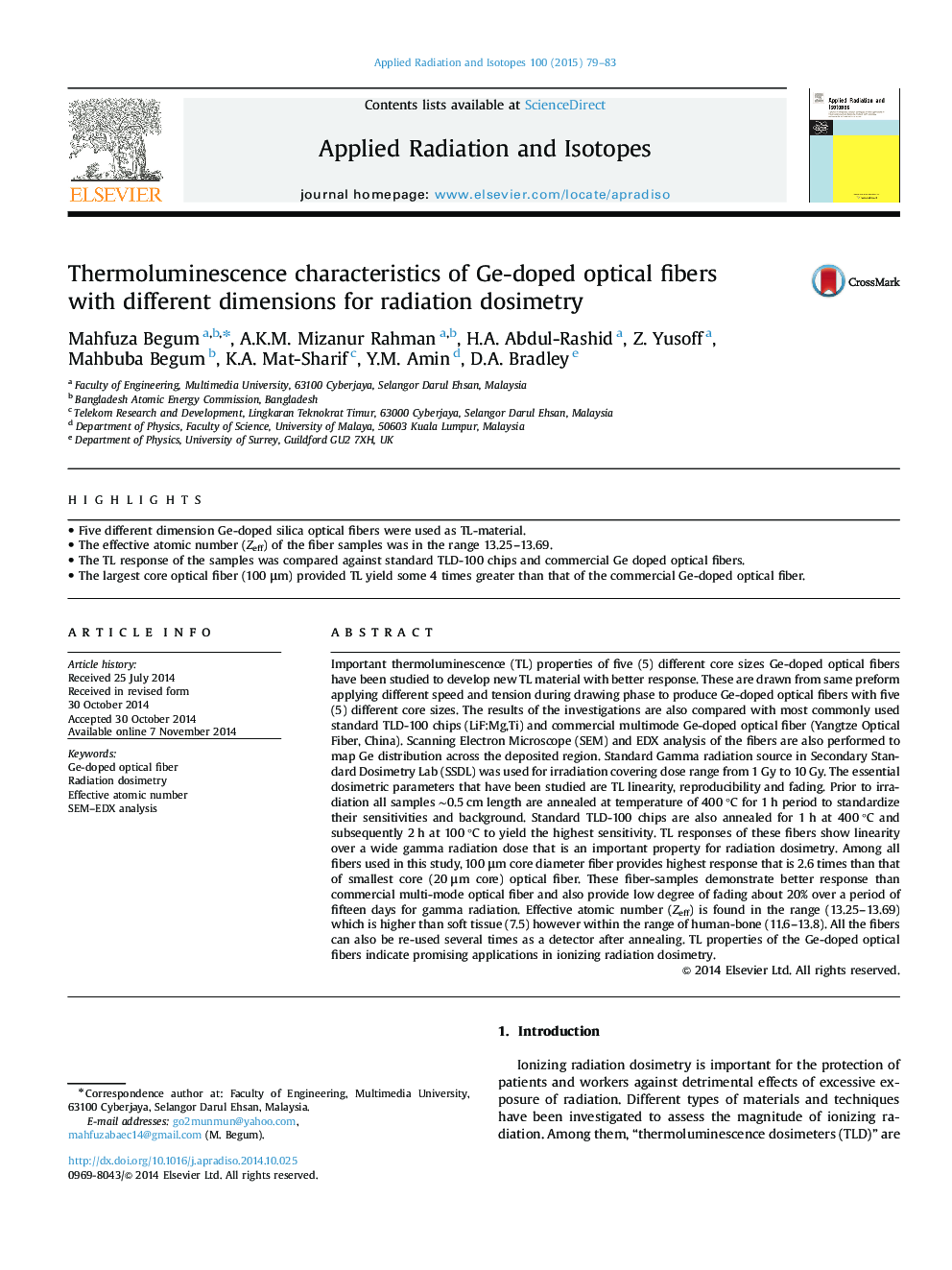| Article ID | Journal | Published Year | Pages | File Type |
|---|---|---|---|---|
| 1878991 | Applied Radiation and Isotopes | 2015 | 5 Pages |
•Five different dimension Ge-doped silica optical fibers were used as TL-material.•The effective atomic number (Zeff) of the fiber samples was in the range 13.25–13.69.•The TL response of the samples was compared against standard TLD-100 chips and commercial Ge doped optical fibers.•The largest core optical fiber (100 μm) provided TL yield some 4 times greater than that of the commercial Ge-doped optical fiber.
Important thermoluminescence (TL) properties of five (5) different core sizes Ge-doped optical fibers have been studied to develop new TL material with better response. These are drawn from same preform applying different speed and tension during drawing phase to produce Ge-doped optical fibers with five (5) different core sizes. The results of the investigations are also compared with most commonly used standard TLD-100 chips (LiF:Mg,Ti) and commercial multimode Ge-doped optical fiber (Yangtze Optical Fiber, China). Scanning Electron Microscope (SEM) and EDX analysis of the fibers are also performed to map Ge distribution across the deposited region. Standard Gamma radiation source in Secondary Standard Dosimetry Lab (SSDL) was used for irradiation covering dose range from 1 Gy to 10 Gy. The essential dosimetric parameters that have been studied are TL linearity, reproducibility and fading. Prior to irradiation all samples ∼0.5 cm length are annealed at temperature of 400 °C for 1 h period to standardize their sensitivities and background. Standard TLD-100 chips are also annealed for 1 h at 400 °C and subsequently 2 h at 100 °C to yield the highest sensitivity. TL responses of these fibers show linearity over a wide gamma radiation dose that is an important property for radiation dosimetry. Among all fibers used in this study, 100 μm core diameter fiber provides highest response that is 2.6 times than that of smallest core (20 μm core) optical fiber. These fiber-samples demonstrate better response than commercial multi-mode optical fiber and also provide low degree of fading about 20% over a period of fifteen days for gamma radiation. Effective atomic number (Zeff) is found in the range (13.25–13.69) which is higher than soft tissue (7.5) however within the range of human-bone (11.6–13.8). All the fibers can also be re-used several times as a detector after annealing. TL properties of the Ge-doped optical fibers indicate promising applications in ionizing radiation dosimetry.
